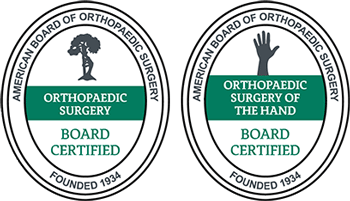Wrist Surgery Recovery Time
Wrist surgery can seem like a daunting prospect, but the right surgical procedure can dramatically improve your quality of life. Whether you’ve sustained a serious injury or you’re suffering from a progressive condition, such as carpal tunnel syndrome, there are surgical solutions that can help. Every wrist surgery is unique, so it’s essential to discuss the details of your treatment plan with your surgeon to understand what to expect. Here’s a general explanation of what you may face after wrist surgery.
Contents
Typical Recovery Timelines for Common Wrist Surgeries

person in blue long sleeve shirt by elizabeth lies is licensed with Unsplash License
The recovery time for your wrist surgery will depend greatly on the nature of your condition. Patients typically recover from wrist tendonitis surgery, which involves removing scar tissue, in just three to four weeks. If you have a fractured bone or torn tendon, it will likely take at least six weeks to heal.
A more complex surgery, such as compound distal radius fracture repair, may require immobilization for eight to 10 weeks. Carpal tunnel surgery is among the most challenging in terms of recovery time. It can take three to four months for the procedure to relieve pressure on the median nerve.
Speak to your surgeon for more precise information about your expected recovery time.
Recovery Stages and What To Expect
There are several stages of recovery following wrist surgery with varying phases of progression. Patients can typically return to light-duty work within a week or two and heavy-duty activities after six to eight weeks. You shouldn’t engage in any activities before your surgeon clears you, or you’ll risk reinjury or compromised recovery.
Recovery stages include:
- Immediate postoperative period: Immediately following surgery, you may experience swelling, bruising, stiffness, and pain. Your surgeon may recommend pain medication or anti-inflammatory drugs. Regularly icing the wrist can also help with your symptoms.
- Early rehabilitation: During the first few days following your surgery, you’ll begin the first stage of rehabilitation. This typically includes gentle stretches and a range of motion exercises as prescribed by your surgeon or physical therapist.
- Midterm recovery: A week or two after your surgery, you’ll enter the midterm recovery phase as the swelling goes down. Your wrist should be much less painful at this point. Your surgeon may clear you for more challenging physical therapy and light-duty work.
- Long-term rehabilitation: Long-term recovery happens over the weeks and months following your surgery. Your injury may continue to heal for months after your return to regular activities. You should progress slowly toward everyday activities and full weight-bearing challenges. Continue with any physical therapy recommended by your doctor.
Factors Influencing Recovery Time
Every patient is different, which is why you need to rely heavily on the instructions of your physical therapist, surgeon, and primary care physician throughout your recovery. If you experience an increase in pain or swelling at any time, you should contact your health care provider. Don’t push yourself out of frustration or impatience, as this can lead to long-term complications.
Preexisting Health Conditions
Certain preexisting health conditions can hinder your recovery following wrist surgery. You may experience a slower healing time if you suffer from:
- Congestive heart failure
- Obstructive pulmonary disease
- Anemia
- Peripheral vascular disease
- Hypothyroidism
- Chronic kidney disease
- Uremia
Lifestyle Factors
Your lifestyle plays a major role in the recovery process. The good news is that this gives you a robust toolbox of tricks that you can use to support a full and fast recovery.
- Nutrition: Maintain sufficient caloric intake even if you have a poor appetite following your surgery. Focus on whole foods with an emphasis on fruits, vegetables, and legumes. Avoid sugars, fats, and processed foods.
- Hydration: Adequate hydration is essential for your body to heal. Avoid caffeine and alcohol, which can dehydrate you, and focus on getting plenty of clean water.
- Rest: Sleeping allows your body to focus all its energy on the healing process. Make a focused effort to get more sleep while you’re recovering from wrist surgery.
- Physical activity: Exercise boosts your circulation so that oxygen and nutrients can be delivered efficiently throughout your body. You should avoid movements that aggravate the surgical site, but still engage in regular physical activity, such as walking or leg exercises, that get your heart rate up.
- Smoking: Smoking inhibits blood flow, so you’ll get less oxygen in your tissues. It also minimizes collagen production, which is important to the healing process. Quit smoking before your surgery to improve your recovery time.
Types of Surgery and Fixation Used
The nature of your injury and surgery can impact your recovery time. Internal fixation occurs inside the wrist and typically heals faster. External fixation uses plates and screws that sit outside the body and involves a longer recovery time.
Effective Wrist Recovery Strategies
You’ll enjoy the fastest wrist recovery for your situation if you:
- Engage in gentle stretches and movement as directed by your doctor.
- Get plenty of rest and elevate your wrist as much as possible.
- Ice and compress your wrist as needed for swelling and discomfort.
- Rest your wrist when not engaged in physical therapy activities.
- Be patient with the pace of your recovery.
Returning to Daily Activities Post Surgery
Return to daily activities gradually. Even when you’re cleared for a new stage of activity, you should progress slowly. Check in with your body as you recover, and only do as much as you can comfortably manage. Your physical therapist can suggest modifications to help you return to everyday activities without straining your wrist more than necessary.
Visit The Hand and Wrist Institute Today
If you’re in need of wrist surgery, our expert team at The Hand and Wrist Institute can help. We have extensive experience with all manner of wrist conditions. We’ll help you develop an effective surgical plan and give you detailed information about what kind of recovery you can expect. Contact us today to get started.

























